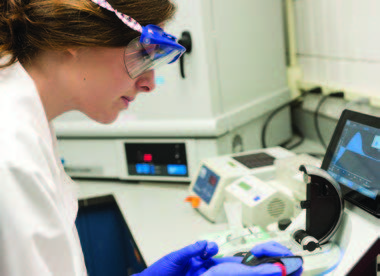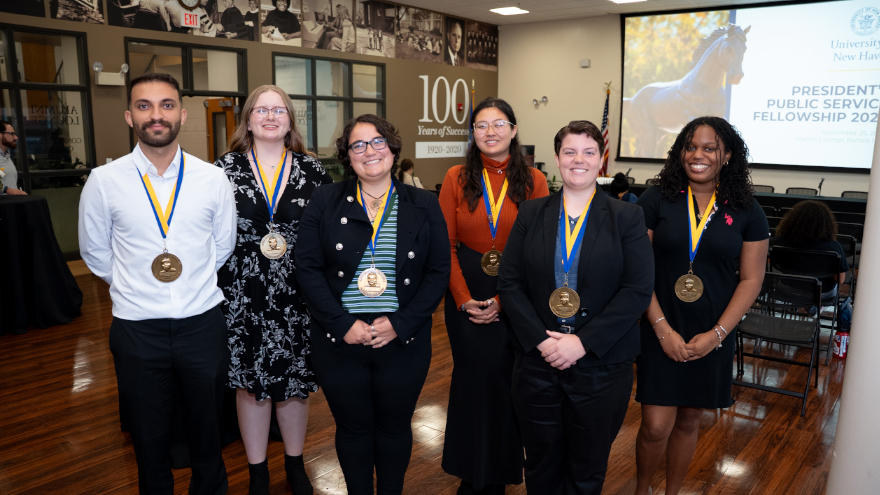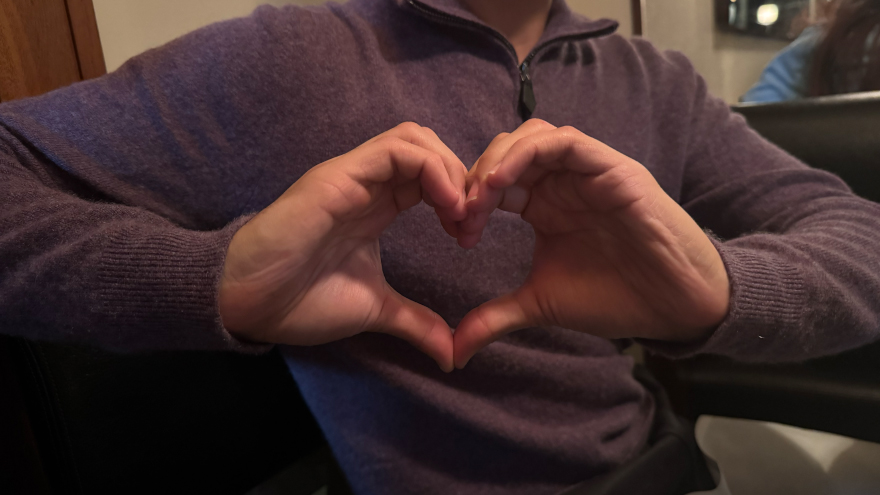April 9, 2018
By Jackie Hennessey, contributing writer

What began last year as a new program with six students has grown into a bustling Biomedical Engineering master’s program with 27 students from around the world.
"They’ve come from China, Nigeria, India, Turkey, Iran, and Myanmar, from California, Connecticut, and New Jersey for the chance to pursue an exciting program and do groundbreaking biomedical research that, for a small lab, has already had striking results," said Kagya Amoako, Assistant Professor and Program Coordinator of Biomedical Engineering.
That research began in earnest last year when Rana Gbyli ’17 M.S., then a student in the University’s Cellular and Molecular Biology program, became Amoako’s research assistant. Amoako and Gbyli worked to solve a puzzle the National Institutes of Health (NIH) has been trying to solve for years — how to stop the spread of infections associated with implanted medical devices like catheters, stents, and artificial lungs.
With over 200 million implantable devices used in patients in the U.S. alone, and a four percent infection rate, infection is a major health problem affecting more than eight million people each year.
"The NIH is very interested in catheter-related blood infections; it’s a very big problem, and they have worked for a long time to find a solution." Kagya Amoako, who is seeking funding from the NIH to do the research to help solve the catheter-related infections.
The lab’s first major breakthrough came last year when they found that polymer-bound nitric oxide can also effectively inhibit the growth of bacteria. "The release of nitric oxide (NO) messes up sticky proteins that bacteria use to adhere themselves onto surfaces and thus prevents them from attaching to the medical device," Amoako said. "The bacteria DNA is also modified by NO, and this affects their replication. What we figured out was how much nitric oxide you need to release to inhibit strains of three bacteria associated with hospital acquired infections." They also wanted to see whether nitric oxide hurt the cells around it — damaging their viability — and, according to their initial studies, it did not.
Now the students are working to see if the nitric oxide can kill bacteria, trying to develop new polymer formulations that release NO over two months to give the product a long shelf life and a release span that would cover the time frame during which an infection usually takes hold. "There’s a lot
of chemistry that goes into this research work," Amoako said. University faculty members in the program and across engineering and biology disciplines are very engaged in research which allows the Biomedical Engineering master’s students to do research they wouldn’t typically be able to do at most universities until the Ph.D. level, Amoako said.
Saleem Haj Ibrahim likes collaborating in the Biomaterials Lab with students from so many different cultures and academic backgrounds. Amoako and faculty members Saion Sinha and Ewa Kirkor invited everyone in the program to a barbecue "to help us know each other more, and we had a lot of fun," he said. "We played soccer, and we talked a lot about our different countries." Originally from Chicago, Ibrahim lived for a while in Kuwait and did his undergraduate work in Jordan. He was drawn to the program because of the opportunity to do research, "because of the high ranking of the University’s engineering program" and its proximity to biomedical firms, as he plans to work in the field after graduating.
Gbyli said the research work with Amoako and with Christina Zito, Assistant Professor of Biology and Environmental Science, proved invaluable to her career.
"I was involved in many projects, had the opportunity to present my research at many conferences, learned what it means to actually run a lab, and had publications, which is very important for a researcher." Rana Gbyli ’17 M.S.
Today, Gbyli is a post-graduate associate at Yale School of Medicine’s Yale Cancer Center, the Halene Lab, which is working to understand the role of splicing factor mutations in myeloid malignancies and develops efficient clinical models to study blood cancers, such as leukemia, and she is an Adjunct Faculty in biology at the University of New Haven. "At the same time, I am still working with Dr. Amoako on publishing my thesis research work," she said. "I am grateful to Dr. Amoako and to my professors in the Cellular And Molecular Biology program, who gave me an amazing opportunity to be a biology adjunct faculty and teach at the University of New Haven."
Amoako said their first paper was accepted and will be published in the Advanced Material Interfaces Journal. Their book chapter was accepted, and they are submitting a second paper for publication. "That is an extraordinary accomplishment for a master’s student," Amoako said.
This year, students are interning at firms including Medtronic and presented their research at the Biomedical Engineering Society, American Society for Artificial Internal Organs, New England Science Symposium, and the Northeast Bioengineering conferences.
"Our students and faculty are highly motivated," Amoako said. "We want to make an impact and do something meaningful for the world. The work we do here is important, and I believe that is what draws students to us."



